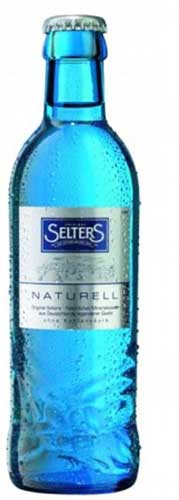
Selters Water Analysis:
| Balance | Still, Light & Bold |
| Virginality | |
| Minerality | Very High |
| Orientation | Acidic |
| Hardness | Very Hard |
| Vintage | |
| Carbonation | Natural |
| TDS | 1,610 mg/l |
| ph factor | 6.6 |
| Hardness | 435 mg/l |
| Nitrate | |
| Calcium | 110 mg/l |
| Magnesium | 40 mg/l |
| Sodium | 290 mg/l |
| Potassium | 13 mg/l |
| Silica | 5 mg/l |
| Bicarbonate | 850 mg/l |
| Sulfate | 20 mg/l |
| Chloride | 260 mg/l |
| Source: | Well |
| Location: | |
| Country of Origin: | Germany |
| Region: | Löhnberg |
| Place: | Selters on the Lahn |
| Established: | 1896 |
| Company: | |
| Status: | Not a member of the Fine Water Society |
| Web Site: | |
| phone: | |
| email: | |
| Social Media: |
The town of Selters is immortalized in the generic terms for carbonated water, Selters water or seltzer. Today, the bottler carries on a classic European tradition by artificially carbonating the very high TDS water to two different levels, Light and Bold.
The village of Selters gets its name from the Celtic word for the spring, Saltarissa. The naturally carbonated water, one of Europe’s oldest brands, was sold widely in stone jars until the flow of the spring stopped in the nineteenth century. To restore the flow, a 1,000-foot (305 m) artesian well was drilled in 1896. This well was known as Auguste Victoria after the German empress of the same name. The stone jars of the past served as a model for today’s remarkable blue bottle.
